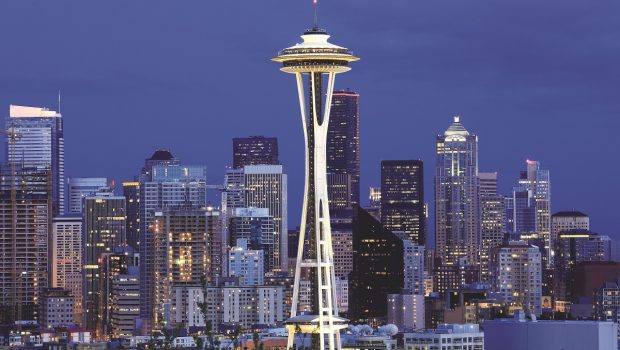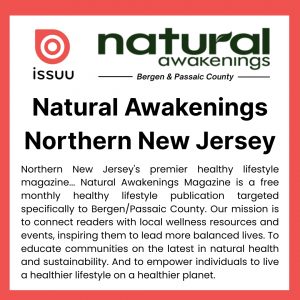Eco-upgrades for America’s Landmarks
Monuments and Parks Adopt Sustainable Practices
by Avery Mack
More U.S. landmarks are now highlighting eco-friendly practices, demonstrating that history can be preserved while incorporating sustainability.
Space Needle, Seattle
Built in 1962, the Space Needle is undergoing a $100 million makeover. The observation deck will soon feature improved views through glass instead of cage-like barriers. Restaurant patrons will enjoy a first-of-its-kind rotating glass floor. Other eco-updates and upgrades include improved accessibility, internal systems, materials, elevators, paint, and seismic protection along its legs. Because the flame at the needle’s top consumed enough gas to heat 125 homes, it was replaced in 2000 with a flagpole mast, a beacon for aviators. When the rehab is completed in June, the structure will qualify for Leadership in Energy and Environmental Design (LEED) Silver Certification.
Golden Gate National Recreation Area, Alcatraz Island, California
A pioneer in hybrid ferries, Alcatraz Cruises combines solar, wind and diesel power to transport visitors. Captured rain freshens park gardens and salt water flushes toilets. In 2013, solar energy produced what would have otherwise necessitated 31,900 gallons of fossil fuel and 325 metric tons of carbon dioxide emissions.
Iolani Palace, Honolulu
Updated lighting units with a life expectancy of 25 years enhance the Iolani Palace facade and provide a 77 percent energy savings, partly through an “instant on” feature instead of power-up lights.
 Grand Canyon National Park, Arizona
Grand Canyon National Park, Arizona
New buildings are LEED certified and shuttle buses are fueled by compressed natural gas. In 2010, a Climate Action Plan introduced green office practices, conversion to solar water heaters in National Park Service residences and increased composting to reduce greenhouse gas emissions from internal operations by 30 percent by 2020. The park is unique in its composting program for mule waste.
Walking Mountains Science Center, Avon, Colorado
Using both passive and active solar energy, ground-source heat pumps, vegetated roofs and sustainable building materials, Walking Mountains is the first science center in Colorado to achieve LEED Platinum Certification, exceeding requirements. Collectively, three of its buildings use half the energy of an average school building. Straw bale construction in some building walls provides sound-deadening insulation suited to a dry climate.
Gateway Arch National Park, St. Louis
St. Louis’ CityArchRiver initiative raised a mile-long waterfront by 30 inches to reduce flood days by 67 percent without causing flooding downstream. “Spent grain donated by the neighboring AnheuserBusch Brewery fertilizes our 4,200 trees,” says Eric Moraczewski, executive director of the Gateway Arch National Park Foundation. In another innovation, “To aerate the soil without damaging historic relics, radishes were planted throughout the park, allowing rainwater to seep deeper,” he explains. “As radishes decay, nutrients are added to the soil.”
Liberty Bell, Philadelphia, and Ground Zero Museum, New York City
“The area housing the Liberty Bell is limited. We installed our ActivePure technology that reduces 99 percent of surface microorganisms and 90 percent of airborne microorganisms,” says Kevin Hickey, president of Aerus, LLC, in Dallas. “It keeps germs from spreading in crowded situations.” ActivePure is also in place at the Ground Zero Museum. “The nature of the artifacts often caused itchy eyes and coughs,” Hickey recalls. “We donated freestanding units and saw improved air quality the next day.”
Empire State Building, New York City
The iconic historic structure is the tallest LEED-certified building in the U.S. It’s also the most photographed building in the world, according to Cornell University researchers in Ithaca, New York. All 6,514 windows were refurbished to be four times more energy efficient than before, reusing 96 percent of the original glass and frames.
Statue of Liberty, New York City
Cooking oils are repurposed as bio-diesel fuel here, annually diverting an average of 10 tons of waste from landfills. More than 6,000 pounds of coffee grounds from serving visitors and staff are composted. Lady Liberty has been 100 percent carbon neutral for 12 years.
South Carolina Aquarium, Charleston
Since 2001, the Aquarium has recycled everything from cardboard and paper to wine corks and ink cartridges. Charleston Harbor water fills the saltwater fish tanks, and landscaping using less-thirsty native plants reduces freshwater use.
While enjoying visits to America’s landmarks, it’s gratifying to realize so many are adopting eco-friendly measures.
Connect with the freelance writer via AveryMack@mindspring.com.
Images: huyenhoang/Shutterstock.com; James Marvin Phelps/Shutterstock.com





























